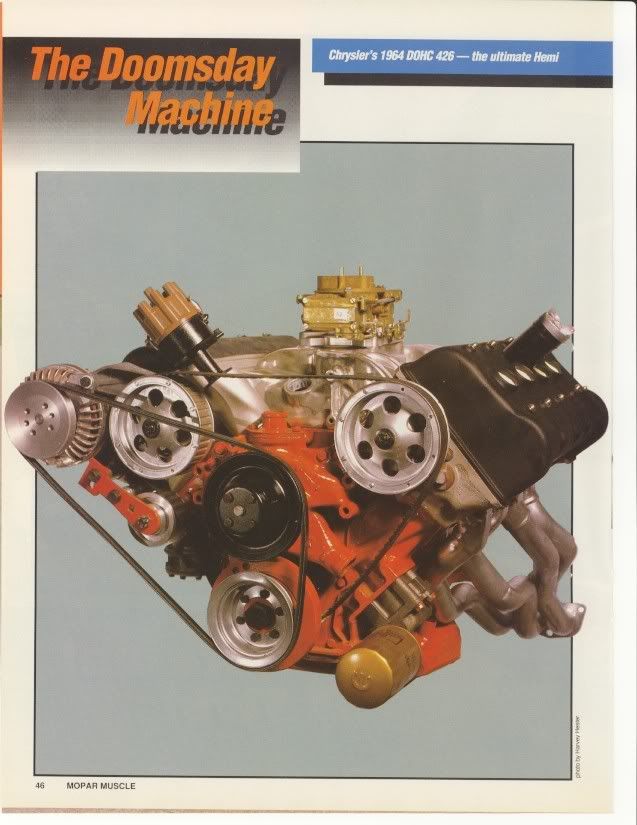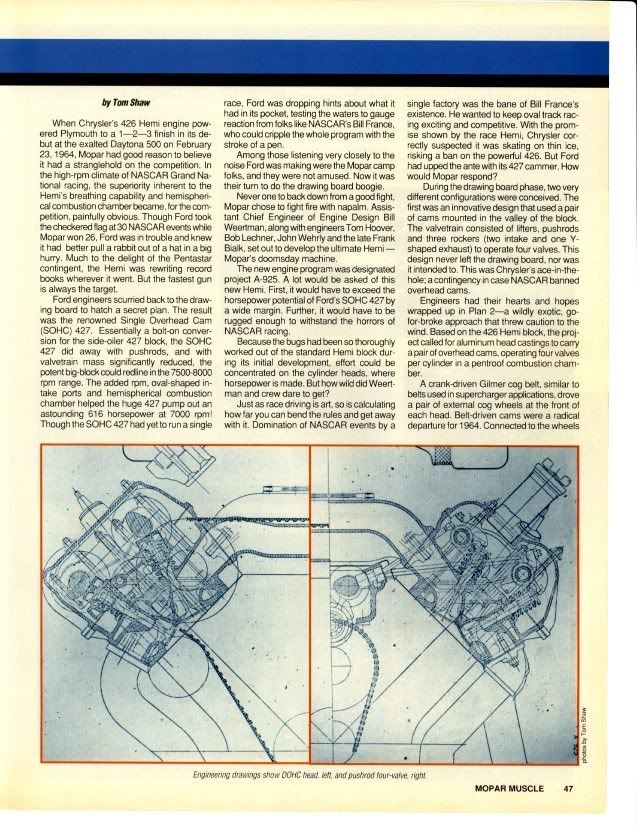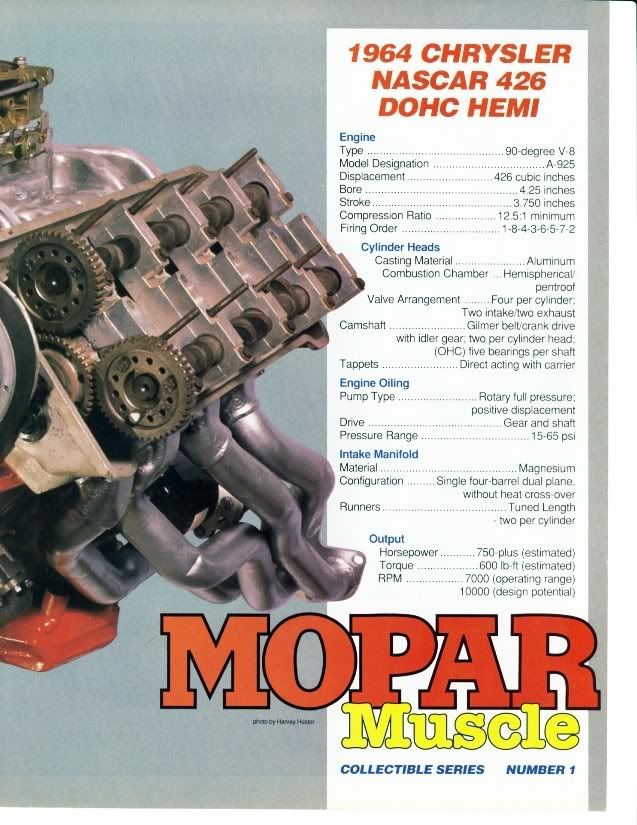I'd like to see PS go to roughly PST displacement (350-ish), allow EFI, and be considerably more strict as to body dimensions. You could have actual over-the-counter blocks and heads being used in everything from small-block pushrod and / or modular Ford, Chrysler Hemi, and GM LS1 motors in cars that actually resemble what you see on the street. Heck I wouldn't mind limiting the chassis to back-half cars only, in fact I think that would be awesome!
I don't know if I'd go as far as limiting to a back half car, but I'm pretty much with you on the rest. The step away from reality in PS was a gradual thing, so there wasn't a bunch of bitching as we took each step into never-never land.
From my often faulty memory, here's how we got to where we are with gasonline powered funny cars:
Jenkins and Nicholson lobby the NHRA for a stronger car with tubular front and rear components. Jenkins told me he was genuinely worried running the speeds with a unibody and roll bar. I don't blame him. This is the step I dislike the least as it wasn't necessarily a bad thing as long as the tubing had to fit under a more or less stock body.
Jump a decade or so as Mopar puts all its eggs in one basket - the K car platform. They quit building rear wheel drive cars. They apply for and get a rules change that allows them to stretch the front ends of cars in order to get a 500 inch V8 installed. The other manufacturers see the benefit of racing their smallest econo models and follow suit.
Non-Pontiac racers complain that the long nose of the Firebird has more overhang and an advantage in the lights. Everybody gets to stretch the car's nose out to the same dimension.
Pro Stock Truck racing starts and immediately Mopar is having a problem again. The Dakota is larger than an S-10 or Ranger. Of course, that's how the truck was marketed in the first place, as a mid size. NHRA gives in and allows them to build a scale replica. The horse is out of the barn and the concept crosses over the the PS cars.
PS rules required a stock steel roof and quarter panels. That gets weird when the new Camaros and Firebirds are introduced with plastic roofs on the production line. The sheet metal requirement is waived and we now have a Pro Stock car with no factory parts other than maybe the light capsules.
Larry Morgan (ain't he great?) strikes a blow for the original intent of the class and installs working headlights on his Camaro. The fans love it, but nobody follows suit in their quest to perfect the Junior Funnycar.
For a reason I still don't understand, NHRA mandates one piece front ends on PS cars. Along with that, they approve a very few composite or fiberglass bodies as being legal. Ostensibly it's to level the field and stop racers from tweaking the bodywork to gain an advantage. Hmm - I though that was the whole point.
So it's now 2007 and we have a version of IROC that nobody wants to talk about. The cars are a cartoon version of what's actually coming down the assembly line. It's no longer about which manufacturer's engineers can design the best car and more about aftermarket body companies being able to get something like the stock headlight and grille appearance.
Hey, call me resistant to change. I still think we've gone down the wrong path. It was a lot more fun when carefully choosing your body style for best advantage - and then finding a builder with the smarts to develop it even further - was the way PS worked.







